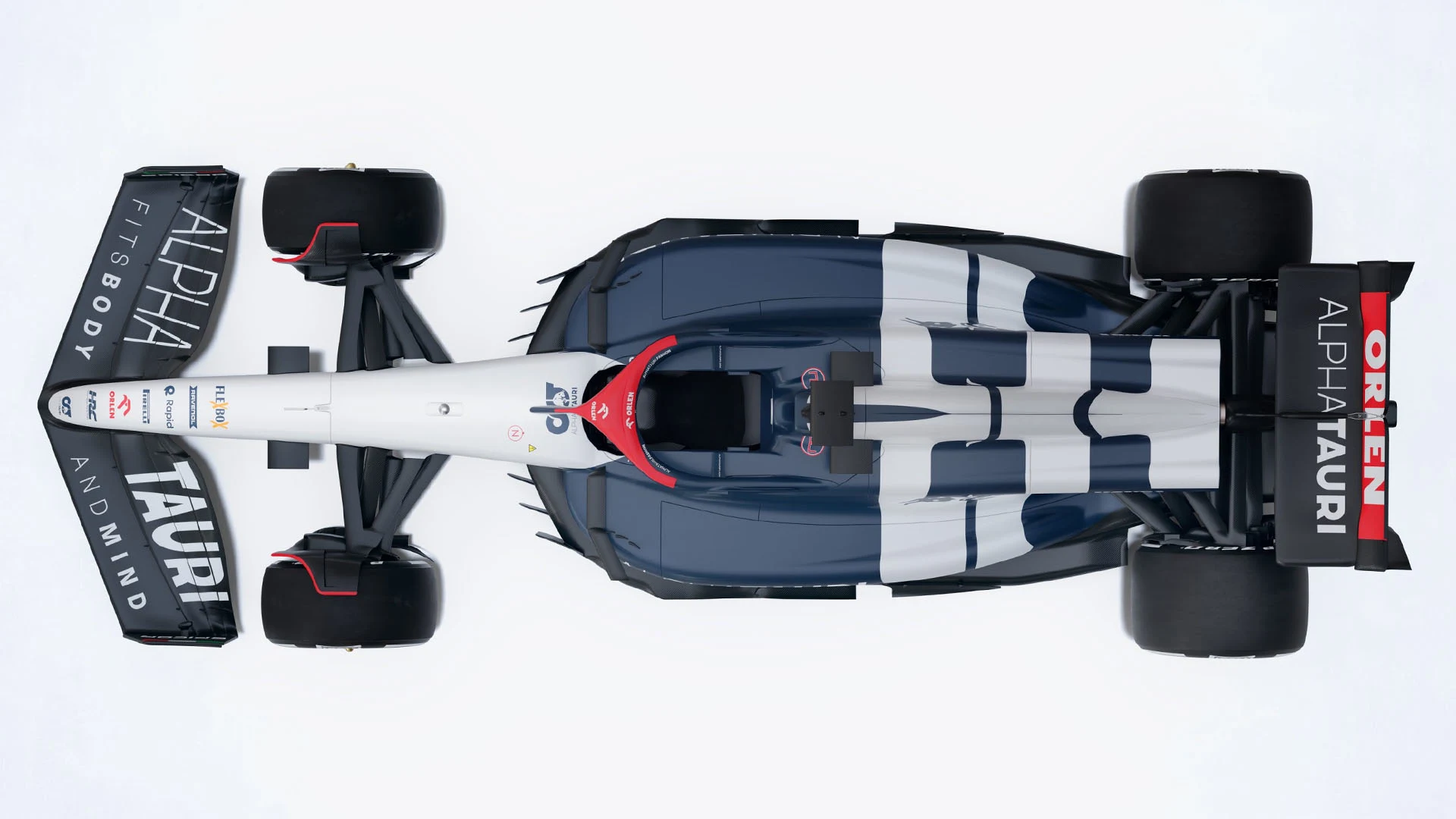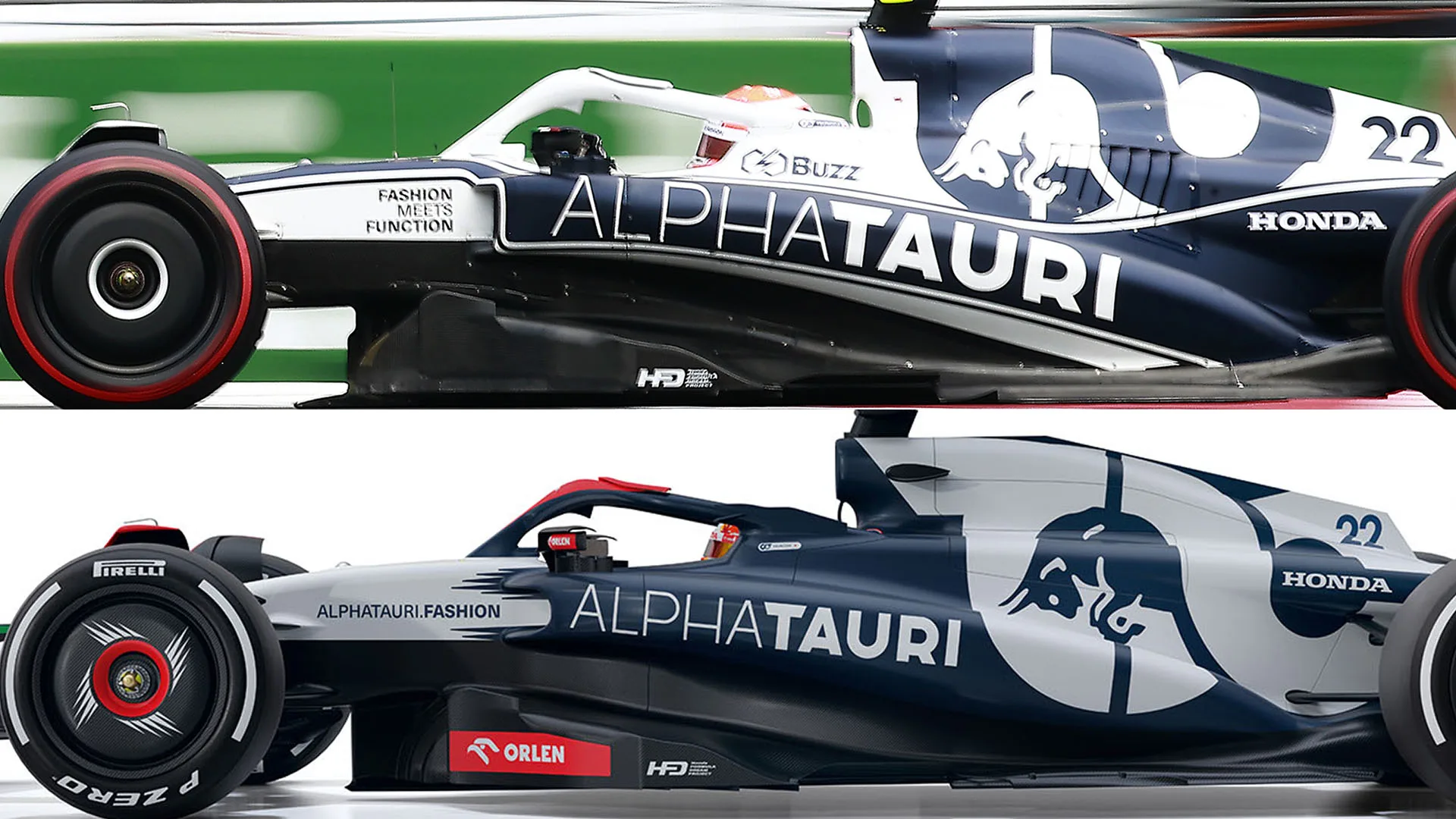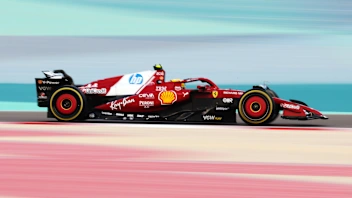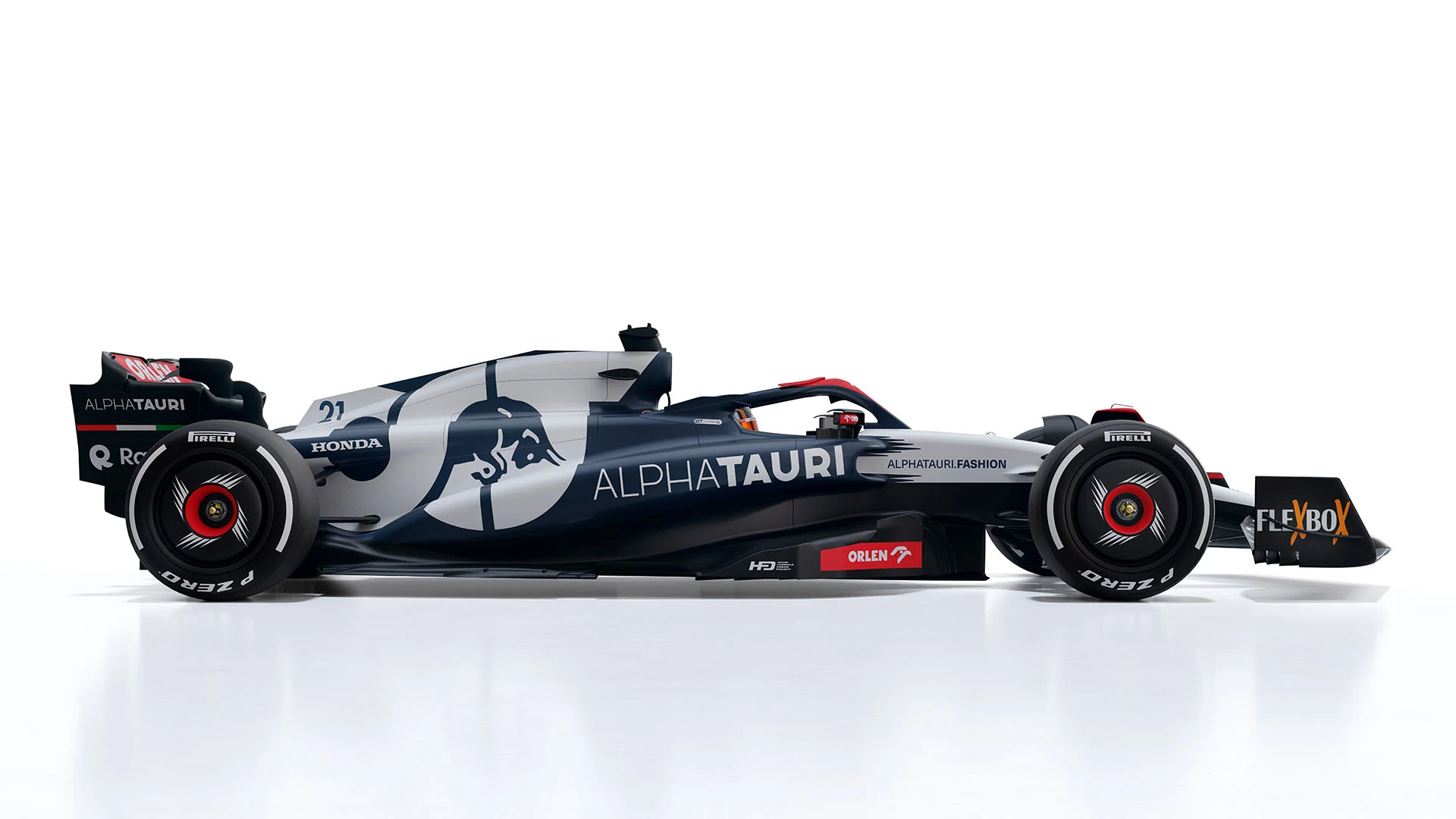Renders of AlphaTauri’s new AT04 suggest a very close similarity with its forebear, the AT03. Visually, it appears much less changed between seasons than either the Alfa Romeo or the Haas, the only other 2023 car renders we’ve seen so far.
The drawings suggest it retains the same AlphaTauri front pushrod suspension, together with Red Bull’s pushrod rear. The radiator inlets are considerably shallower and less boxy than before and the bodywork ‘cannon’ which defines the cooling route for the rear-exiting radiator expelled air is situated notably higher than before at the front, before then swooping back down at the rear.
FIRST LOOK: AlphaTauri reveal livery for 2023 AT04 at glitzy New York F1 season launch
Pulling the cooling channel up out of the way has enabled the sidepod downward ramp below to be steepened slightly, which should further accelerate the airflow making its way down there to the gap between the rear wheels. This in turn should pull harder on the underfloor air which is exiting the diffusers of the floor tunnels, thereby increasing underbody-generated downforce.

In plan view, as seen above, the contours of the sidepod as it narrows towards the rear leave less exposed outer floor than on last year’s car. This may be just an unavoidable outcome of changing the sidepod architecture to enable that steeper downward ramp, or it could be a deliberate choice so as to reduce the porpoising-inducing cantilever effect of the floor as it gets loaded up by the underbody downforce.
The stiffer this part of the floor has to be made, the heavier it will be. Reducing the exposed area will mean it doesn’t have to be so stiff and can therefore be lighter.
GALLERY: Every angle of AlphaTauri’s new livery for the 2023 F1 season
But by far the biggest performance driver on this generation of cars is the underfloor and the design of the venturi tunnels within. Unfortunately we cannot see how this may have been changed, but there is a suggestion from the renders that the entry inlets to the tunnels may start further back.
It’s impossible to be definitive about this without seeing the real car, but last year Technical Director Jody Egginton suggested that increasing the distance between the front wheels and the floor inlets would be the key to improving the car’s inconsistent aero balance through different phases of a corner – AlphaTauri having finished a lowly P9 in the 2022 constructors’ standings.

To eradicate mid-corner understeer often required a set-up which brought unacceptable rear instability on turn in. Moving the floor’s aero balance rearwards would help widen that window.
Just because the car looks similar doesn’t mean its aerodynamics don’t work in a completely different way. It will be fascinating to see if this car can bounce AlphaTauri back from their disappointing 2022 season.
Next Up
Related Articles
 All the key pre-season dates for F1 2026
All the key pre-season dates for F1 2026 Quiz20 quiz questions on the 2025 Formula 1 season
Quiz20 quiz questions on the 2025 Formula 1 season/TWGMS-F1-Announcement-1298%20(1)%20(1).webp) ExplainedEverything you need to know about Cadillac’s entry to F1
ExplainedEverything you need to know about Cadillac’s entry to F1.webp) How F1 drivers recharge during the winter break
How F1 drivers recharge during the winter break.webp) ExclusiveLowdon on why Zhou ‘ticked all the boxes’ for Cadillac
ExclusiveLowdon on why Zhou ‘ticked all the boxes’ for Cadillac.webp) 7 things to be excited for in the 2026 F1 season
7 things to be excited for in the 2026 F1 season

